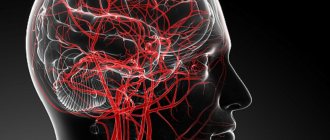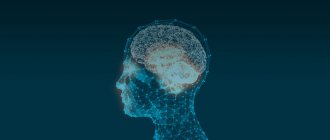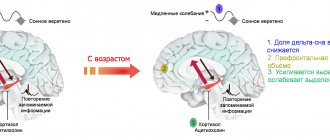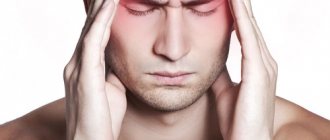sleep disorders ( dyssomnia, insomnia) . It is worth noting that these problems occur more often in women. If someone has even minimal sleep disturbance, then you need to understand the complexity and seriousness of this problem, since “lack of sleep” will sooner or later negatively affect the emotional and physical state of the body. It is also worth noting that an adult may experience a chronic form of insomnia.
Insomnia - causes and consequences
Insomnia is a sleep disorder that occurs due to a number of different factors. Let us dwell on the following reasons that can trigger the occurrence of insomnia.
- Mental disorders (psychotic and neurotic, neurosis-like register, psychosomatic disorders).
- Somatic diseases.
- Alcohol abuse.
- Use of psychotropic drugs.
- Disturbances of the endocrine system.
- Organic brain damage.
- Various types of intoxication of the body.
- There are various stimuli around a person – traumatic, stressful situations.
- Shift work.
- Abrupt change in time zones.
Several types of insomnia : acute sleep disturbance and chronic. Acute insomnia lasts up to three weeks, while chronic insomnia lasts more than three weeks.
Let's consider the following types of insomnia , according to the specific reason why it occurs.
- Adaptive insomnia occurs in response to stressful situations, as a result of which the functioning of the central nervous system is disrupted. At the end of the day, our nervous system is exhausted and enters a phase of overstimulation, as a result of which problems with falling asleep and transitioning into the phase of sound sleep appear. Typically, adaptive insomnia can last for about three months. The problem is completely solvable if you eliminate the irritating factor, it is important to do this under the guidance of an experienced specialist - a psychologist or psychotherapist.
- Psychophysiological insomnia is characterized by the occurrence of fear immediately before falling asleep. In such cases, a person forces himself to fall asleep, to which the nervous system begins to “resist.”
- Poor sleep hygiene – the cause of insomnia is the characteristics of the body and habits. Some people perform a whole “ritual” before going to bed, which does not always contribute to the onset of healthy sleep - this is doing physical activity before bed, drinking coffee (both factors bring the central nervous system into activity). It is worth considering that insomnia can occur if there is sleep during the daytime. To solve the problem, you need to reconsider your habits, your diet and daily routine.
- Secondary insomnia occurs due to certain somatic ailments. Basically, these are diseases of the endocrine or respiratory system, diabetes, problems with the cardiovascular system.
- Insomnia due to disruption of human biorhythms, when the hours of falling asleep and waking do not correspond. The reason for this may be the characteristics of the body, frequent moves, changes in climatic zones.
Many people do not pay attention to sleep disturbances, unaware of the danger and harmful effects on the body. This problem needs to be emphasized, since the lack of healthy and adequate sleep can lead to decreased performance, increased irritability, lack of energy, etc. Insomnia can also contribute to the occurrence of various psychosomatic diseases, such as atypical dermatitis, chronic gastritis, bronchial asthma, arterial hypertension, as well as mental disorders of the neurotic range (neuroses).
What is dyssomnia?
Dissomnia (dis + Greek somnos - sleep), the same as insomnia, is one of the sleep disorders, in other words, insomnia.
It is characterized by difficulties and disturbances in falling asleep, the quality of sleep itself is superficial, intermittent, and early awakening. The ICD-10 code for dyssomnia is F51.0 G47.0. The clinical symptom is characterized by a reduction in the duration of night rest, a lack of freshness and vigor after waking up, and drowsiness is also observed during the day. Dyssomnia occurs in both adults and children.
The causes of the disorder are the following:
- taking certain medications;
- sleep disturbance;
- poor conditions for falling asleep;
- pathological processes in the body;
- time zone changes while traveling;
- night shift work;
- elderly age.
Changing sleep patterns is not always considered a pathology. Creative inspiration, changes in the environment, and the emergence of situations that require increased performance cause quite logical anxiety. As a result, sleep dynamics change. This deviation is called compensatory; it is not pathological.
In what cases should you contact a specialist for insomnia?
- Insomnia does not go away with changes in diet and lifestyle.
- Insomnia is a consequence of traumatic situations, stress, problems at home, at work, in school, etc.
- Insomnia is accompanied by difficulty breathing, panic attacks, increased anxiety, low mood, painful sensations in the chest area, etc.
- Insomnia has become a constant problem that is getting worse every day.
Diagnosis of insomnia
In order to diagnose insomnia and determine its type and classification, you need to contact an experienced, highly qualified specialist. A professional in this field will focus on the following criteria during the diagnostic process.
- Definition of a person's stereotype.
- Characteristic features of national culture.
- Features of the work.
- Results of pathopsychological examination.
- Characteristic traits of character and temperament.
- Results of polysomnographic examination.
- Evaluation of medical examinations.
During the diagnostic process, it is necessary not only to determine the presence of the disease, but also to find out the cause of its occurrence in order for the treatment to be as effective as possible.
Only a long and thorough examination by an experienced specialist will help to accurately determine the diagnosis and select effective treatment for a specific case.
What is hidden under the mask of DEP?
Many patients with Alzheimer's disease (AD) are observed for a long time in the clinic with a diagnosis of DEP/CHI, without receiving adequate treatment. AD in our country is poorly diagnosed; patients are often observed with an erroneous diagnosis of chronic vascular lesions of the brain, even in cases of classic manifestations of the disease [Parfenov V.A. et al., 2014].
Absolutely all patients diagnosed with DEP require examination of cognitive functions, and in cases where the amnestic nature of cognitive disorders is detected, the neurodegenerative nature of the disease becomes probable (or a mixed nature: vascular disease + neurodegenerative process), therefore examination in a specialized center is required. As an example, we present 2 clinical cases.
Clinical case No. 1. DEP and BA
Patient N. , 69 years old , was brought to the clinic by relatives, with their complaints of progressive memory loss over three years. Three years ago, the husband began to notice the patient’s memory deterioration and speech impairment increasing over time (“she began to forget the names of some household items, had difficulty choosing the right words in a conversation”), and over the past two years she has not gone to the store because she has difficulty carried out financial calculations. A few weeks ago I couldn’t recognize my sister and niece, which was the reason for going to the doctor.
The patient’s condition at the place of residence was assessed as “discirculatory encephalopathy of the II degree. Cerebral atherosclerosis." However, no neuropsychological study was performed. Elevated blood pressure values (150-160/90-100 mm Hg) were recorded several times, but the patient did not seek medical help for this and did not take antihypertensive drugs.
A somatic examination revealed no significant pathology. The neurological status showed moderately pronounced reflexes of oral automatism and damage to the cranial nerves; no paresis or other neurological disorders were detected.
Brief Mental Status Rating Scale - 4 points, Frontal Dysfunction Battery - 2 points, Clock Drawing Test - 2 points, during the Symbolic Numerical Coding Test she was able to correctly indicate 2 digits in 1.5 minutes. Memorizing words is extremely difficult. When talking with the patient, attention is drawn to a decrease in speech fluency and pronounced elements of agnosia; when naming the objects being shown (the hammer), he says the following: “I don’t know for sure... but it’s probably intended for the household, I think.” Cannot correctly name the time of year or his age.
A CT scan of the brain revealed bilateral atrophy of the temporal lobes and hippocampi with an accent on the left. The results of duplex scanning revealed no stenosis or blockage of the carotid, vertebral or subclavian arteries. The patient was examined by a cardiologist who prescribed antihypertensive drugs. Antidementia drugs galantamine 12 mg/day and memantine 20 mg/day were prescribed. Repeated examinations after 3 and 6 months did not reveal significant changes in neuropsychological tests.
Thus, in our country there is a low level of diagnosis of AD; the majority of patients with AD are diagnosed with DEP or CCI, when cognitive impairment in most cases is caused precisely by a neurodegenerative process (AD) or its combination with cerebrovascular disease, and much less often have pure vascular genesis (vascular cognitive disorders).
Clinical case No. 2. DEP and depression
Patient K., 63 years old , was seen by a neurologist with complaints of headaches, non-systemic dizziness, and sleep disturbances. The patient actively complained of loss of appetite (loss of body weight by 2-3 kg per month), fear of losing consciousness in a public place, fear of sudden death, and being alone at home for a long time. The patient avoided using the elevator. A thorough survey revealed complaints of bad mood, low self-esteem, irritability, fear of the future, blaming oneself for the inability to cope with what is happening, loss of interest in life, back pain, decreased concentration, due to which “nothing can be completed.” " The above symptoms were pronounced in the first half of the day, especially in the morning, and decreased somewhat in the evening.
The patient has been suffering from hypertension for a long time, periodically consulted various specialists on an outpatient basis (therapists, neurologists, cardiologists, otorhinolaryngologists), was treated with a diagnosis of stage II DEP with astheno-neurotic disorders and vestibulopathy; chronic vertebrobasilar insufficiency against the background of cervical osteochondrosis. Treatment included the prescription of betahistine, cinnarizine, afobazole, and he received diclofenac injections in courses; no lasting improvement was noted during the treatment. He was very concerned about his health and independently studied medical literature. An objective examination revealed no somatic pathology; blood pressure was 145/100 mm Hg. Art. A neuropsychological examination did not reveal any abnormalities: brief mental status assessment scale – 30 points, battery of tests for identifying frontal dysfunction – 18 points, clock drawing test – 10 points. No changes were noted in the neurological status. Tests for positional nystagmus and the Halmagi-Kerthoys test are negative. Duplex scanning of extra- and intracranial arteries without local changes in hemodynamics. MRI of the brain showed signs of moderate external replacement hydrocephalus.
Taking into account the peculiarities of the clinical picture, the absence of somatic and neurological disorders allowed us to assume that this patient had a depressive disorder. The patient was referred for consultation to a psychiatrist, who diagnosed a depressive episode of moderate severity with somatic symptoms. Supportive psychotherapy was conducted, aimed at explaining the mechanisms of existing disorders (psychoeducation), coping with neurosis-like symptoms and improving interpersonal interaction. It is recommended to take sertraline at an initial dose of 25 mg/day, followed by an increase to 100 mg/day during the 1st week and up to 150 mg/day at the end of the 1st month. During the treatment, the patient noted a significant improvement in well-being in the form of improved mood, increased daily activity, decreased intensity and decreased frequency of headaches. Observation of the patient for 3 months showed a lasting effect from the treatment.
Anxiety and depressive disorders can be a manifestation of both chronic CVD and psychogenic emotional disorders. Today, a significant proportion of patients suffering from psychogenic anxiety and depressive disorders are erroneously diagnosed with DEP/CHI without receiving adequate treatment. Effective drug and non-drug therapy for anxiety and depressive disorders helps most patients, both with and without chronic CVD.
Source: Parfenov V.A. Dyscirculatory encephalopathy and vascular cognitive disorders. – M.: IMA-PRESS, 2021. – 128 p.: 12 ill.
Treatment of insomnia
Usually, at the first manifestations of insomnia, everyone strives to independently solve this problem by using a variety of drugs from the medicinal group. Before purchasing and starting to use drugs, you need to know that on pharmacy shelves you can also find many herbal-based dietary supplements that have a hypnotic effect on the body. And even if it is indicated that the drugs are based exclusively on natural ingredients, they have certain contraindications and side effects that may occur when interacting with other drugs. Based on this, we strongly recommend that you consult a doctor before consuming anything.
Sleeping pills help improve sleep, but they do not eliminate the cause of the disease. Frequent use of sleeping pills can worsen insomnia and lead to addiction. For this reason, sleeping pills can be used in extreme cases and for a short period of time. Observations show that changes in diet and lifestyle have a beneficial effect on falling asleep.
In order to effectively combat insomnia, you need to learn to think positively.
- The phrase “Insomnia constantly torments me” should be replaced with a more positive one: “There are good nights and I even manage to dream.”
- The thought “To be in good shape you need to sleep every night” needs to be replaced with “Every second person on the planet solves problems with insomnia, and I can do it.”
- Replace the thought “Lack of sleep will adversely affect an important event” with “Regardless of the degree of my fatigue, everything will be at the highest level. And even if I can’t fall asleep, I rest and relax.”
- The thought “I will never get good sleep again” needs to be replaced with “Insomnia is treatable, and you need to set yourself up for a positive outcome.”
- The thought “I won’t be able to fall asleep before an hour later” should be replaced with “No matter what happens in the evening, I will still fall asleep.”
All our thoughts are material. It is for this reason that you need to learn to think positively; the result will not keep you waiting long. In contrast to your negative thoughts, you can make your own positive list.
If you know that at the end of the day you feel a feeling of heaviness and tension, there are a variety of relaxation techniques that will help relieve mental and physical stress. Relaxation helps you fall asleep quickly. The advantage of relaxation is the complete absence of drug treatment; the effect is based on the ability to relax and fill your body with positivity and lightness.
Relaxation techniques that have a beneficial effect on the process of falling asleep
- Before going to bed, it is recommended to do everything at a calm and relaxing pace: listen to classical music, the sound of rain or sea in dim light, do embroidery or knitting, read a book.
- Master the technique of abdominal breathing. You need to learn to breathe deeply in order to fill the body with oxygen. In this case, during the breathing process, the muscles of the back, thoracic region, and abdomen are activated, as a result of which the functioning of the parasympathetic nervous system is normalized, which helps to relax the body. Sit comfortably, close your eyes, inhale slowly and deeply, the depth of inhalation should increase each time.
- Muscle progressive relaxation - performed in a lying position. First, we strain the leg muscles as much as possible (tension time is up to ten seconds), relax. Then we strain the next group of muscles, gradually reaching the top of the head.
Insomnia is not a death sentence if you treat its treatment professionally and with a positive attitude!
We constantly detect plagiarism on our materials without providing a clickable follow link to them. In this case, without warning, we turn to Google DMCA , which leads to pessimization of the plagiarist. On the contrary, we welcome the popularization of our materials, but with the obligatory active follow link to this page psyhosoma.com/dissomniya-narushenie-sna-kak-spravitsya/ .
Why don't boys get sick?
Considering that the mutating gene is carried on the X chromosome, girls are in a more “advantageous” position in terms of the disease. They have two X chromosomes. Therefore, if one of them is “defective,” then the second one functions normally. This gives the girl at least a small chance for a normal life.
The boy has one X chromosome. If it has a mutation gene, it means it is completely out of work, and there is nothing to replace it. Such male babies, as a rule, die in utero, without being born. Therefore, Rett syndrome is extremely rare in boys.
But, despite this peculiarity of the disease, it is very rare that boys with a similar syndrome survive. This may be due to the fact that not all genes on the X chromosome undergo mutation. Because of this, the disease does not develop as acutely.
Another reason is that the boy has Klinefelter syndrome. In this case, polysomy of sex chromosomes is observed, that is, their set is XXY. And, if one X chromosome has a pathological gene, then the second can regulate protein synthesis and give the boy the opportunity to live. The result is the same picture as the girl's.








